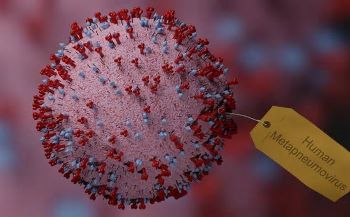Human Metapneumovirus (HMPV) Outbreak: A Global Concern
Fortunately, there’s no need for undue alarm. Awareness and precaution are key!
A recent outbreak of Human Metapneumovirus (HMPV) in China has sparked global concern.
Several countries, including India, are closely monitoring the virus’s spread.
HMPV is a common respiratory virus that causes upper and lower respiratory infections, similar to the common cold.
Typically a seasonal disease, HMPV outbreaks usually occur during winter and early spring,
mirroring the patterns of Respiratory Syncytial Virus (RSV) and influenza.
HMPV infection manifests as a respiratory disease, characterized by flu- or cold-like symptoms.
However, it can escalate into more severe complications, such as bronchitis or pneumonia,
especially among vulnerable populations, including the elderly, young children, and individuals with compromised immune systems.
Human Metapneumovirus (HMPV) Outbreak: A Global Concern
The current HMPV outbreak has sparked global concern, in part, due to its eerie similarity to the emergence of COVID-19.
It has been five years since the world first became aware of a novel coronavirus in Wuhan, China,
which rapidly evolved into a devastating global pandemic, claiming millions of lives worldwide.
This recent outbreak serves as a stark reminder of the potential for infectious diseases to spread rapidly and cause widespread harm.
Despite being distinct viruses, HMPV and COVID-19 share some similarities:
- Respiratory disease impact:
Both viruses cause respiratory infections in people of all ages, with young children, older adults, and those with weakened immune systems being the most vulnerable.
- Symptom overlap:
The symptoms of HMPV, including cough, fever, nasal congestion, and shortness of breath, are similar to those experienced by individuals infected with COVID-19.
-
Transmission methods:
Both viruses are primarily spread through respiratory secretions from coughing and sneezing, close personal contact,
Indirect contact with contaminated objects or surfaces, followed by touching one’s mouth, nose, or eyes
Northern China has witnessed a significant surge in HMPV cases, primarily affecting children, according to local health authorities.
In response, China’s Centre for Disease Control (CDC) has urged citizens to exercise caution and maintain rigorous health and hygiene practices.
However, the CDC has also sought to alleviate concerns by dispelling online rumours about overwhelmed hospitals;
and the potential for another pandemic on the scale of COVID-19.
Notably, HMPV differs significantly from COVID-19 in its history and seasonal patterns.
Unlike COVID-19, which emerged as a novel coronavirus,
HMPV has been present for several decades, with the first reported cases in the Netherlands in 2001.
Additionally, HMPV outbreaks tend to follow a seasonal pattern, typically peaking during the colder months.
Fortunately, there’s no need for undue alarm.
Human Metapneumovirus (HMPV) Outbreak: A Global Concern
Awareness and precaution are key.
To minimize the risk of transmission, take the following steps:
- Frequent handwashing: Wash hands with soap and water for at least 20 seconds.
- Avoid touching facial areas: Refrain from touching eyes, nose, or mouth with unwashed hands.
- Maintain distance: Avoid close contact with individuals who are sick.
- Respiratory etiquette: Patients with cold-like symptoms should cover their mouth and nose when coughing or sneezing.
- Avoid sharing personal items: Refrain from sharing cups, eating utensils, or other personal items with others.
While there is currently no vaccine available to prevent HMPV,
adhering to these precautions will significantly reduce the risk of transmission.
Also Read: Optimal Heart Health With Dr. Bob – Diademng
Human Metapneumovirus (HMPV) Outbreak: A Global Concern

















